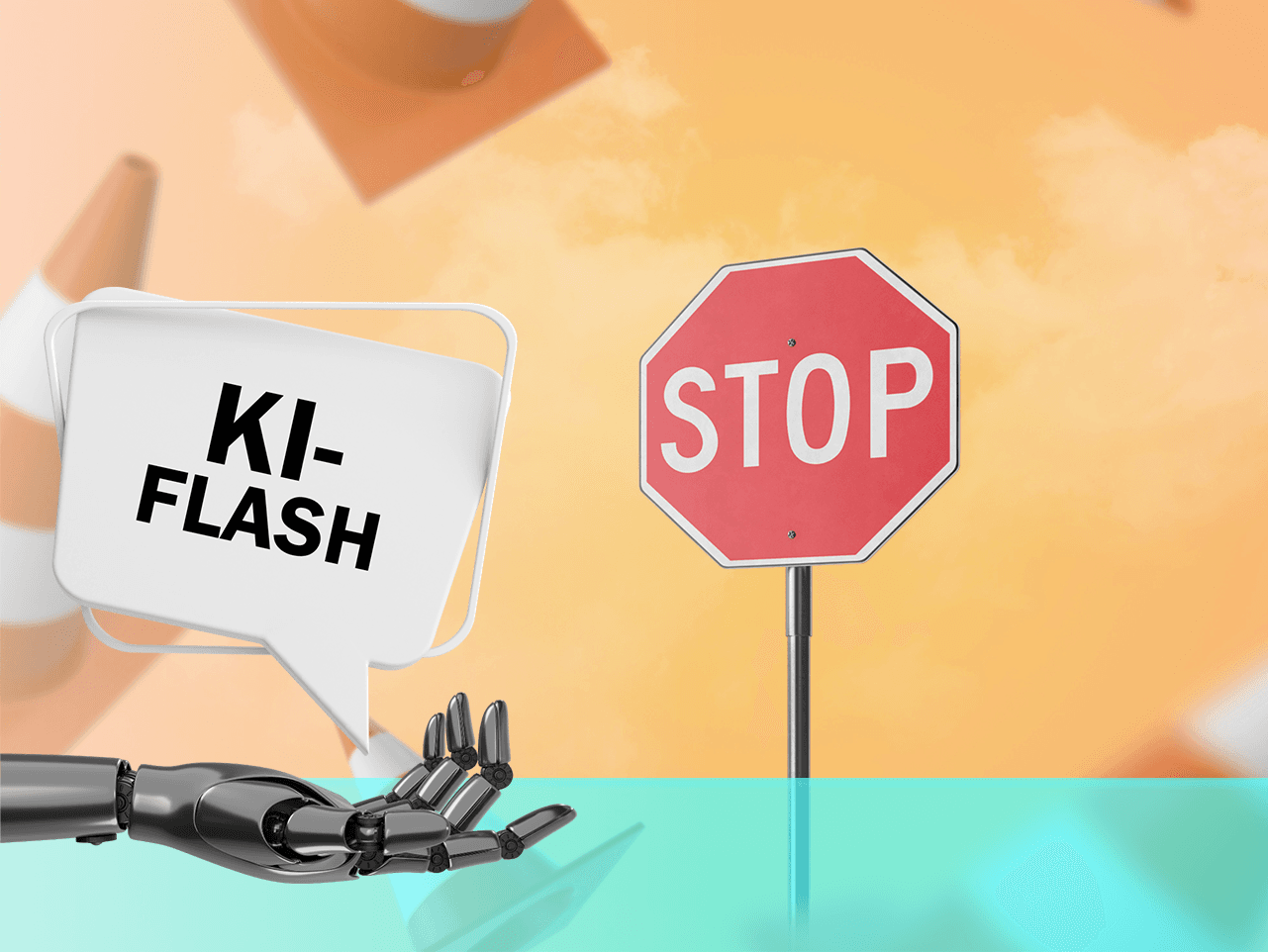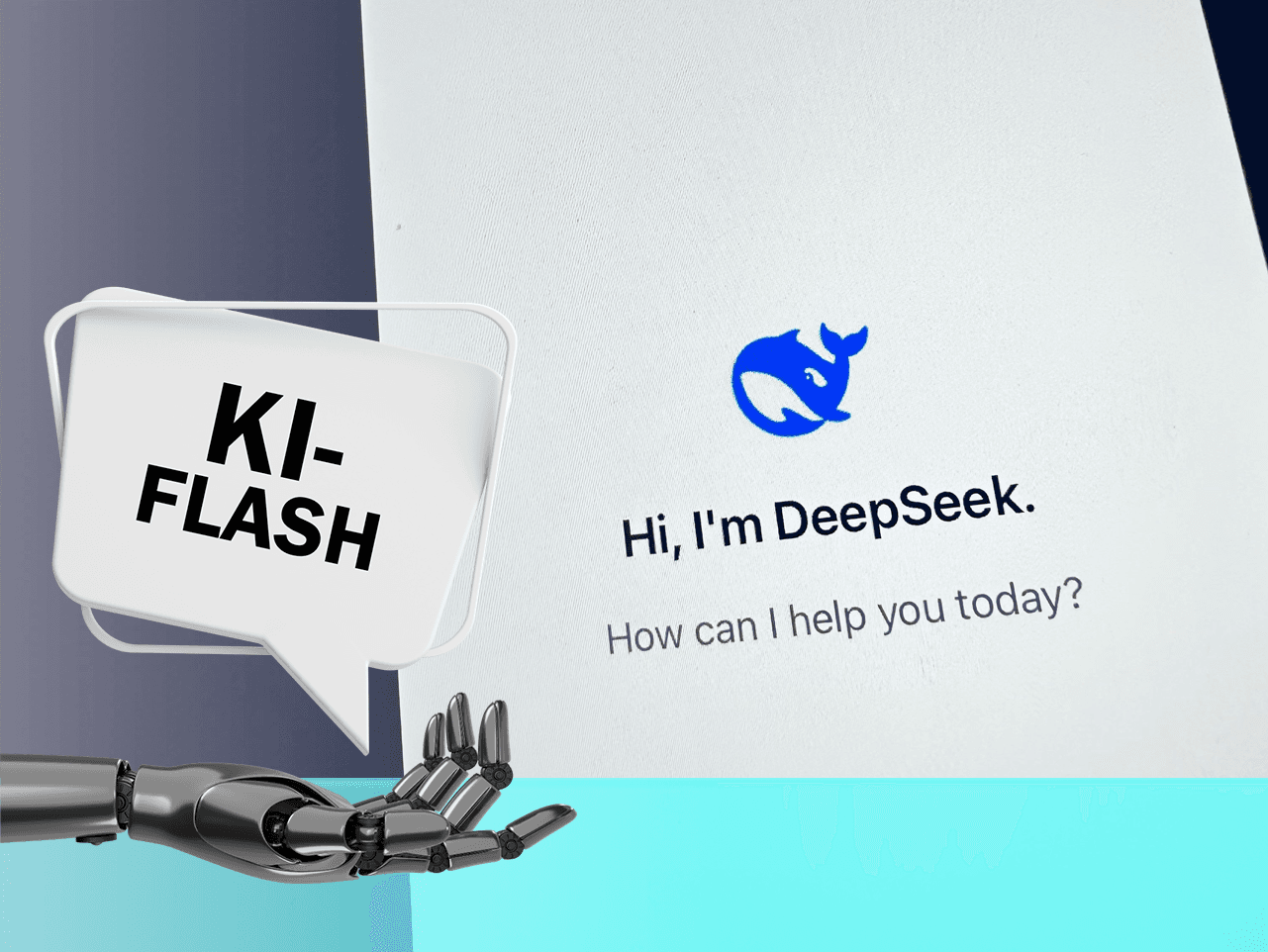After reporting on the market surveillance of AI in our last AI Flash, we would like to continue to provide you with legal impulses at regular intervals.
Today's topic: European Commission guidelines on the concept of an AI system
On February 6, 2025, the European Commission published guidelines on the definition of AI systems, among other things. In addition, guidelines on prohibited AI practices under Art. 5 of the AI Regulation were also published, which will be dealt with in a separate AI Flash in the near future.
As expressly stated in the accompanying press release from the European Commission, the guidelines are not binding, but are intended to facilitate the effective application of the provisions of the AI Regulation. A final classification is therefore naturally reserved for a judicial decision by the European Court of Justice (ECJ), which is why further developments should always be closely monitored.
The guidelines are based on the provisions of Art. 96 para. 1 lit. f) of the AI Regulation, according to which the European Commission is obliged to specify the definition of the term “AI system” for practical application. Even though the guidelines have so far only been approved but not formally adopted, the statement contains a large number of welcome examples and aids for application.
The following AI Flash is intended to highlight the key messages of the publication and conclude with some practical tips for providers and operators of AI systems.
The definition of an AI system
According to Art. 3 para. 1 of the AI Regulation, an AI system is
“a machine-based system that is designed to operate with varying degrees of autonomy and that can be adaptive once operational and that derives outputs such as predictions, content, recommendations or decisions that can affect physical or virtual environments from inputs received for explicit or implicit goals.”
The European Commission correctly points out that the definition is based on a total of 7 components, some of which overlap or are mutually dependent. An AI system is classified according to the following characteristics:
- Machine-supported system (1)
- Degree of autonomy (2)
- Adaptability (3)
- Goals of the AI system (4)
- Ability to draw conclusions (5)
- Generation of specific outputs (6)
- Interaction with the environment (7)
These 7 components are further specified in the European Commission's guidelines and provided with corresponding examples. In the following, the individual characteristics of the definition will be examined in detail and also provided with further examples.
(1) Machine-based system
The term “machine-supported” initially refers to the fact that AI systems are developed with machines and operated accordingly. The term “machine” can be understood to include both the hardware and software components that enable the AI system to function at all. The hardware components refer to the physical elements of the machine, such as processing units, memories, storage devices, network units and input and output interfaces that provide the infrastructure for calculations. The software components, on the other hand, comprise computer code, Instructions, programs, operating systems and applications that control the processing of data and the execution of tasks by the hardware.
The requirement “machine-supported” therefore ultimately only underlines the fact that AI systems must be computer-supported and based on machine operations. The term AI system therefore - unsurprisingly - covers a wide range of computing systems.
(2) Degree of autonomy
The second element of the definition states that AI systems must work with varying degrees of autonomy. This means that they function independently of human intervention to a certain degree. The degree of autonomy can vary from manual operation to complete independence from human intervention. According to the European Commission, “human involvement” and “human intervention” are at the heart of the concept of autonomy.
If a system is designed in such a way that it is able to work completely independently without any human involvement or intervention, it is an autonomous (AI) system. Systems that only perform manually operated functions, on the other hand, should be excluded from the definition of an AI system. Human involvement can take place both directly and indirectly, for example through manual controls or automated, monitoring. In contrast, a system that independently generates output based on manually entered data is considered partially autonomous.
(3) Adaptability
The third element of the definition in Art. 3 para. 1 of the AI Regulation states that an AI system “may” exhibit adaptability after its introduction. Autonomy and adaptability are different but closely related concepts. Adaptability refers to the self-learning capabilities of a system that enable it to change its behavior during use. This allows the system to produce different results, even with the same inputs. The ability of a system to learn automatically and discover new patterns is an optional, but not a mandatory, prerequisite for classification as an AI system.
(4) Goals of the AI system
The fourth element of the definition refers to the goals of the AI system, which can be defined either explicitly or implicitly. Explicit goals are clearly formulated goals that are coded directly in the system by the developer, such as the optimization of a cost function or a probability. Implicit goals, on the other hand, result from the behavior of the system or the assumptions underlying the system and can be derived from the training data or the interaction of the AI system with its environment.
Recital 12 of the AI Regulation clarifies that the objectives of an AI system may differ from its intended purpose. The objectives of an AI system are internal to the system and relate to the tasks and their results that the system is intended to perform. The intended purpose, on the other hand, is external and includes the context in which the system is used and its operation. According to the European Commission, a virtual AI assistance system in a company can have the goal of answering user questions precisely, for example, while the intended purpose is to support a specific department in its tasks.
(5) Conclusions
The fifth - and probably most difficult to define - element of an AI system is that it must be able to deduce from the respective inputs how it can generate outputs. An essential feature of AI systems is therefore their ability to draw conclusions, which distinguishes them significantly from conventional software systems. Recital 12 of the AI Regulation expressly clarifies that AI systems must be different from conventional software systems and that this should not include systems that are based exclusively on rules defined by natural persons for the automated execution of processes.
Cases in which the classification as an AI system must be affirmed:
Techniques that enable reasoning and therefore fall under the definition of an AI system include machine learning approaches such as supervised, unsupervised, self-supervised and reinforcement learning.
- In supervised learning, the system is trained with labeled data in order to recognize patterns and classify new data.
Example: An AI-supported email spam detection system that is previously trained with labeled data (“spam” or “not spam”) in order to classify “new” emails accordingly. - In unsupervised learning, the system discovers patterns in previously unlabeled data in order to discover structures or relationships in data using various techniques (clustering, dimensionality reduction or anomaly detection).
Example: AI systems in pharmaceutical companies that are used for drug discovery. - Self-supervised learning is a subcategory of unsupervised learning in which the system uses unlabeled data in order to subsequently (then supervised) independently label it and learn from it.
Example: An image recognition system that learns to recognize objects by predicting missing pixels in an image. - Reinforcement learning is based on a “reward function” in which the system learns through trial and error and refines its strategy in the process.
Example: An AI-supported robotic arm that can perform tasks such as grasping objects. - Deep learning is a sub-area of machine learning that uses artificial neural networks (ANN) to learn features from raw data, whereby very large amounts of data are regularly required for training.
Example: Complex AI systems that are capable of recognizing and reproducing speech and communicating with natural persons, such as ChatGPT, Micro-soft Copilot, etc.
In addition to machine learning approaches, there are also logic- and knowledge-based approaches that are based on coded knowledge or symbolic representations. These systems learn from knowledge that has been encoded by human experts and draw logical conclusions using deductive or inductive methods. Examples include expert systems based on predefined rules and ontologies, and classical language processing models that use grammatical knowledge and logical semantics to extract meaning from texts.
Cases in which the classification as an AI system is to be denied:
Recital 12 of the AI Regulation clarifies that the definition of AI system should not include systems that are based exclusively on rules established by natural persons for the automatic execution of operations. Some systems that are able to draw conclusions do not fall under the definition of AI systems, as they are only able to analyze patterns and adapt their output independently to a limited extent.
Systems for improving mathematical optimization or for accelerating established optimization methods, such as linear or logistic regression, do not fall under the AI definition, as they only perform basic data processing. Examples are systems that use machine learning to improve optimization algorithms or physics-based systems that use machine learning to accelerate physical simulations.
Simple data processing systems that follow predefined instructions and do not use AI techniques such as machine learning or logic-based inference also do not fall under the AI definition. This includes database management systems that sort or filter data, as well as software for descriptive analysis, hypothesis testing and visualization.
Systems based on classic heuristics that find solutions to problems using rule-based approaches or pattern recognition also do not fall under the definition of AI. One example is a chess program that uses heuristic evaluation functions without learning from data. Simple prediction systems that operate through basic statistical learning rules, such as predicting stock prices through historical averages, are also not classified as AI systems. These systems provide basic predictions, but their performance does not match the complexity of modern machine learning models.
In summary, systems that only use basic data processing or fixed rules without data-driven “learning” are therefore not covered by the definition of AI systems under the AI Regulation.
(6) Generating specific outputs
The sixth element of the definition of an AI system states that the system must be able to produce outputs such as predictions, content, recommendations or decisions.
- Predictions are estimates of unknown values from known inputs and require the least human intervention. AI systems that use machine learning can uncover complex patterns in data and make accurate predictions in dynamic environments. Examples include self-driving cars that make real-time predictions and adapt decisions in complex traffic situations, or systems for estimating energy consumption based on data analysis.
- Content refers to the generation of new material such as text, images or videos, often based on machine learning models such as GPT technologies.
- Recommendations are suggestions for specific actions or products based on user preferences and behavioral patterns. AI-powered recommendation systems can process large amounts of data, adapt in real time and provide personalized recommendations, which in turn distinguishes them from static, rule-based systems.
- Decisions refer to automated conclusions or actions traditionally made by human judgment. An AI system that makes decisions automates this process and achieves results without human intervention.
To summarize, AI systems are differentiated from non-AI systems by their ability to process complex relationships and patterns in data and generate differentiated results such as predictions, content, recommendations and decisions. This ability enables them to “think” in a more differentiated way and to act in structured environments.
(7) Interaction with the environment
The seventh element of the definition of an AI system is that the results of the system influence the physical or virtual environment. This emphasizes that AI systems actively influence their environment instead of being purely passive. The influence of an AI system can affect tangible, physical objects such as a robotic arm, as well as virtual environments, including digital spaces, data streams and software ecosystems.
Practical advice
Even if some technical nuances remain open despite reading the guidelines, the European Commission's elaborations are very welcome. Since the question of whether a system is an AI system or not has a decisive impact on the applicability of the AI Regulation, companies must examine very carefully for each system whether the respective characteristics of the definition of an AI system are fulfilled. As this cannot be done in detail (solely) through a legal review, the IT managers must always be involved in the process. In our view, it is also advisable to draw up a detailed audit template that can be used to document the results of the audit accordingly.
In cases of doubt, it will probably be advisable to affirm the existence of an AI system. The legal risk is generally considered to be significantly greater if mandatory requirements are not implemented than in the exact opposite case. Of course, this only applies if the non-existence of an AI system cannot be justified with reasonable arguments from a technical point of view.
We will be happy to support you with a corresponding audit and the subsequent implementation of all requirements for legally compliant AI compliance!





